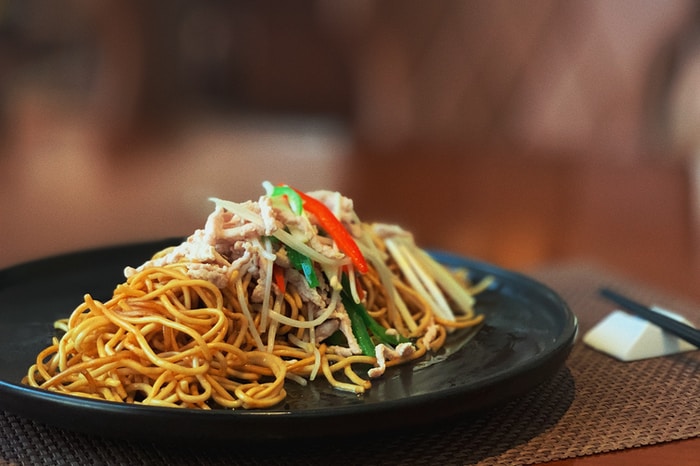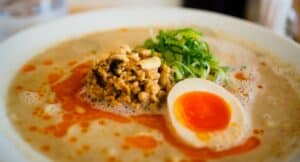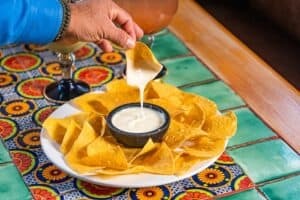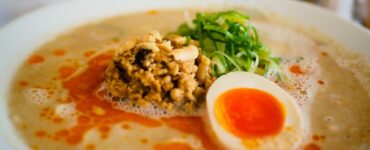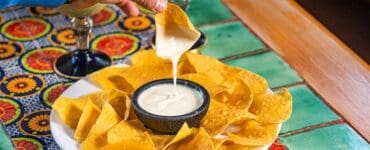If you are gluten free, you may be wondering if you can enjoy yakisoba noodles. The answer is unfortunately no – yakisoba noodles are not gluten free.
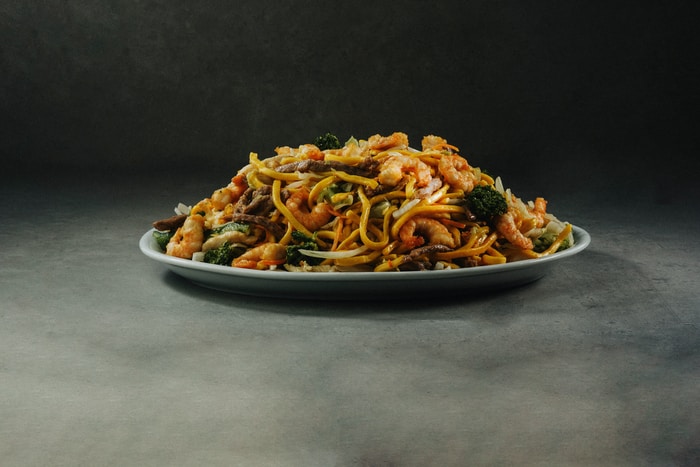
There are many reasons why yakisoba noodles are not gluten free. One reason is that they are made with wheat flour. Wheat flour contains gluten, which is a protein that can be harmful to people who have celiac disease or a gluten intolerance.
Another reason yakisoba noodles are not gluten free is that they often contain soy sauce, which is also not gluten free. Soy sauce contains wheat malt, another ingredient that contains gluten.
What Are Yakisoba Noodles Made Of?
In Asia, Yakisoba is a popular dish made of stir-fried noodles. It is usually made with ramen-style noodles, pork, cabbage, and a variety of seasonings. The ingredients are typically combined and cooked in one pan. Some people also add vegetables or meat to the dish.
Yakisoba noodles are made primarily of wheat flour and water. They also contain salt, oil, and soy sauce. The noodles are boiled and then stir-fried with other ingredients. They have a chewy texture and a slightly salty flavor.
Great Alternative for Gluten-Free Noodles
There is a growing demand for gluten-free foods, and buckwheat soba noodles offer an interesting alternative to traditional gluten-free noodles. Buckwheat is a grain that is naturally gluten-free, and Buckwheat soba noodles are made from buckwheat flour.
They have a slightly different flavor than traditional yakisoba noodles, but many people find them to be just as tasty. They have a slightly nutty flavor and firm texture that makes them a perfect substitute for yakisoba noodles.
Buckwheat soba noodles are also high in protein and fiber, making them a healthy option for a meal or side dish.
Are Yakisoba Noodles Healthy?
Yakisoba noodles are a popular Japanese dish that is made with wheat flour noodles and vegetables. The dish is often served with a soy-based sauce. While yakisoba noodles are generally considered to be a healthy dish, there are some things to keep in mind when eating them.
First of all, yakisoba noodles are high in carbohydrates and calories. A single serving of yakisoba noodles can contain up to 400 calories. So if you’re watching your weight, it’s best to eat them in moderation.
Second, yakisoba noodles are not very high in nutrients. A single serving contains only about 5 grams of protein and 3 grams of fiber. So if you’re looking for a healthy, nutrient-rich meal, yakisoba noodles may not be the best choice.
What Does Yakisoba Mean
Originating in Japan, yakisoba is a dish made with fried noodles and vegetables. The word yakisoba is composed of two kanji characters: “yaki” meaning “fried” and “soba” meaning “noodles”.
Yakisoba is a popular dish in Japan and can be found at most izakayas (Japanese pubs). It is also a popular dish to take out and eat on the go.
How Did Yakisoba Noodles Come About?
In the aftermath of World War II, Japanese soldiers were stationed in China. There, they discovered a type of Chinese noodle dish that used stir-fried vegetables and pork. The soldiers brought this dish back to Japan, where it was adapted and became known as yakisoba (“fried noodles”). Yakisoba is now a popular dish in Japan and can be found in most restaurants and convenience stores.
How Do You Make Gluten Free Yakisoba Noodles?
Ingredients
- 1/2 cup of Coconut Aminos or Tamari
- 1/4 cup of mirin
- 1/4 cup of sugar
- 1 tablespoon of cooking oil
- 1 pound of pure buckwheat soba noodles
- 3 green onions, chopped
Instructions
- In a bowl, combine coconut aminos or tamari, mirin, and sugar. Set aside.
- Heat cooking oil in a large skillet over medium heat.
- Add yakisoba noodles and cook for about 5 minutes or until tender.
- Pour sauce mixture over noodles and toss to coat.
- Cook for an additional 2 minutes or until heated through.
- Top with green onions before serving.
How to Eat Yakisoba Noodles?
One of the most popular dishes in Japan, yakisoba noodles are a type of fried buckwheat noodle. They can be enjoyed with a variety of toppings, such as meat, vegetables, or eggs. Here are some ways to enjoy yakisoba noodles:
With Vegetables
You can enjoy yakisoba noodles by adding vegetables to the dish. This can add nutritional value and flavor to the dish. Some vegetables that can be added include onions, mushrooms, green beans, and carrots.
With Chicken
Chicken is a common topping, but it can be made with shrimp, beef, pork, or vegetables. The most popular way to eat yakisoba is by mixing the cooked noodles with a soy-based sauce and adding your desired toppings. Some people prefer to eat them dry without any sauce, while others like to add chili sauce or other condiments for extra flavor.
In a Salad
You can add yakisoba noodles to a salad. This can be a great way to enjoy the noodles on a hot day when you don’t want a heavy meal. The salad can include any vegetables that you like and a dressing of your choice.
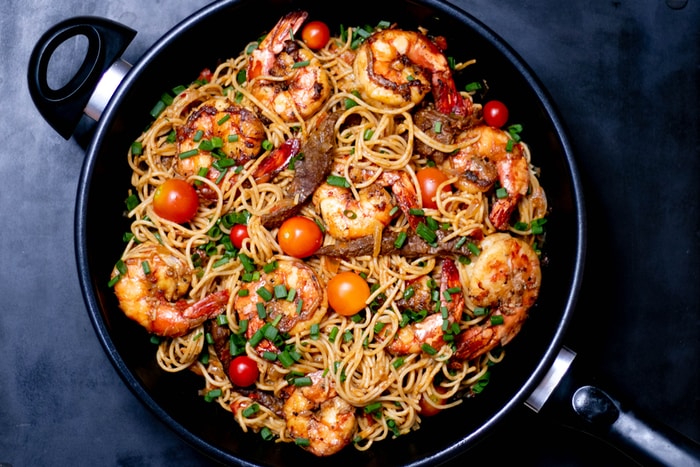
As a Pizza Topping
Another way to enjoy yakisoba noodles is by using them as a pizza topping. By adding yakisoba noodles to your next pizza, you’ll add a new and unique flavor to your pizza that everyone will love. Yakisoba noodles are perfect for pizza because they are already cooked and have a slightly sweet flavor that goes well with cheese and pepperoni.
As a Soup
This can be done by adding chicken broth or beef broth to the pan when you are cooking the noodles. You can also add vegetables, such as mushrooms, onions, and green peppers. If you like, you can also add some protein, such as chicken or beef. Adding a little soy sauce and Sriracha sauce will give the soup some added flavor.
Do Yakisoba Noodles Have Egg?
When you look at a package of yakisoba noodles, the first thing you may notice is their bright yellow color. This color comes from the use of kansui, which is also responsible for the noodles’ unique texture. However, this unusual ingredient can sometimes lead to confusion, as some people mistakenly believe that yakisoba noodles contain egg.
The truth is that yakisoba noodles do not contain egg. The yellow color comes from the kansui, which is an alkaline salt that is used to give the noodles their characteristic chewy texture. This ingredient is also responsible for the noodles’ slightly orange hue.
What Types of Sauce You Can Use with Yakisoba
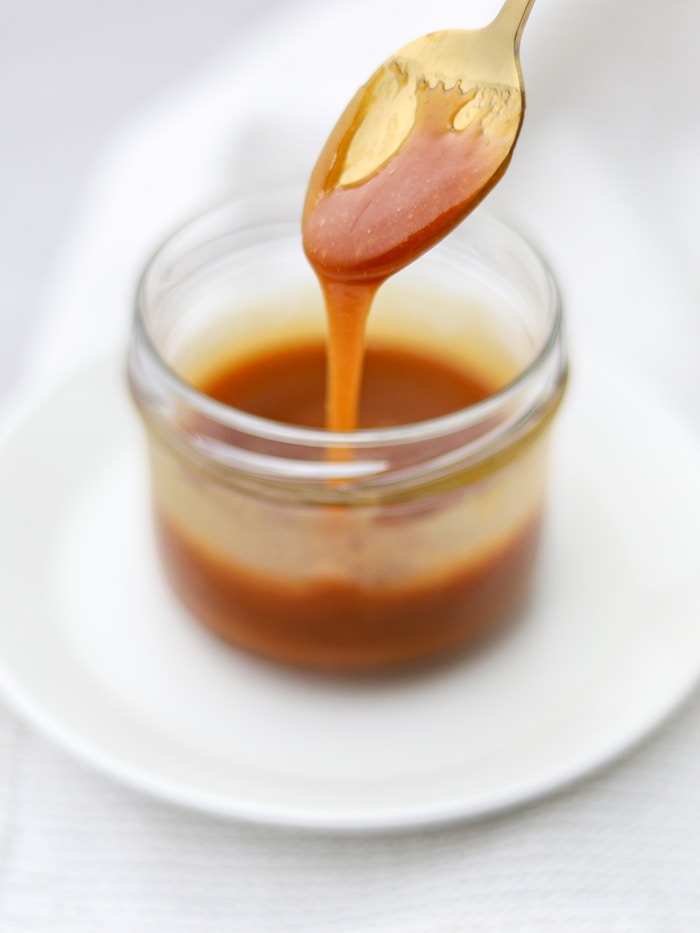
Sauces are a great way to add flavor to food. There are many different types of sauce that can be used with yakisoba. Here are a few examples of sauces that can be used with yakisoba:
Teriyaki Sauce
There are many options, but one of the most popular sauces is teriyaki sauce. It has a sweet and savory flavor that goes well with the noodles and vegetables in yakisoba. If you want to make your own teriyaki sauce, all you need is soy sauce, honey, rice vinegar, and ginger.
Tonkatsu Sauce
One popular sauce to use is Tonkatsu sauce, which is a thick, brown sauce made from Worcestershire sauce, ketchup, and other spices. It’s usually served as a condiment in Japanese restaurants and is perfect for adding a delicious flavor boost to yakisoba.
Worcestershire Sauce
Worcestershire sauce is one of the best condiments to use with yakisoba noodles. The sauce is made with a variety of spices, including garlic, onion, mustard, and vinegar, which give it a unique flavor that pairs well with the noodles. Additionally, Worcestershire sauce is a great way to add extra flavor to your dish without adding too much salt.
Bulgogi Sauce
Bulgogi sauce is a Korean sauce that is made with soy sauce, sugar, rice vinegar, garlic, and sesame oil. It is a delicious and flavorful addition to yakisoba noodles, and it enhances the flavor of the noodles and the other ingredients in the dish.
Okonomiyaki
Okonomiyaki sauce is a Japanese dipping sauce made from a variety of ingredients, including Worcestershire sauce, soy sauce, and ketchup. It is typically used as a condiment for yakisoba noodles, but can also be used with other dishes.
The sauce is flavorful and has a slightly sweet and tangy taste that pairs well with the salty and savory flavors of the noodles. It also adds a slight thickness and richness to the dish.

